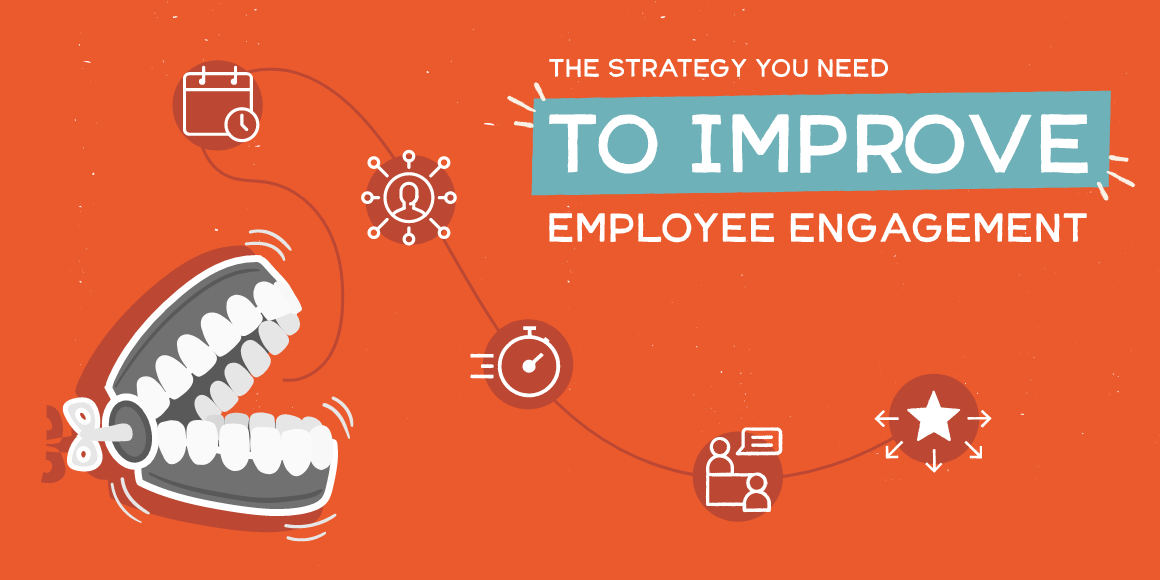
Employee engagement is having a moment. While it’s common to find the term used interchangeably with job satisfaction, they’re not synonymous—they’re more like two halves of the same coin. Understanding the distinction will set better expectations, and focus your employee engagement strategy.
Employee Engagement—What It Is and What It’s Not
Employee engagement is impacted by everything from progress conversations to sharing values with an organization. Gallup defines employee engagement as “the involvement and enthusiasm of employees in both their work and workplace.”
Alternatively, job satisfaction is the sense of fulfillment a person derives from their work, aligning more with fair compensation and work-life balance. This is the important part: Engagement and shared values can’t be bought. They have to be earned.
Disengagement is a growing concern for employers worldwide that has a massive financial impact. Teams of discontent employees are not only less productive, but they also experience turnover at rates 18 percent to 43 percent higher than their highly engaged counterparts.
Signs of Disengagement
- Not taking initiative
- Meeting minimum expectations
Prioritize Internal Communications
Internal communications should be the foundation of your strategy to improve employee engagement. It is the beating heart that supports circulation from top to bottom. When you’ve defined who you’re talking to and how you want to communicate, it provides a clear purpose for everything else.
Four Elements of an Internal Communications Strategy
To build an internal communications strategy that will strengthen your brand and improve employee engagement, you need to focus on:
- The right time: Be intentional with the timing of communication to ensure messages reach employees when they need them. Whether it’s a valuable update or a post-onboarding survey, good timing increases opportunities for engagement with what you have to say.
- The right channel: Know and understand where your employees prefer to get their information. Not everyone reads emails or checks the intranet. Some prefer to simply read posters in the breakroom. When you find the right channels to communicate with your employees, there’s greater potential for messages to be received and spark dialogue.
- The right speed: Have you ever been to a party where another guest wouldn’t stop talking? There’s a cadence to effective communications—read the room, identify the right speed for your team, and optimize as needed.
- The right tone: Every communication touchpoint should build your brand. What culture are you trying to cultivate? What values and beliefs does your organization hold dear? Keep these at the core of your communications to connect your employees with the identity of your brand.
Reinforce Messaging Offline
Internal communications aren’t the endgame to employee engagement. Be proactive and capitalize on every opportunity to support your strategic communication plan. Convince your team the culture you want to create is more than a nice message by putting words into action.
Recognize a Job Well Done
Employees don’t want to feel like they’re working in the dark. Make them feel seen by implementing recognition programs to identify and reward your team for good work.
It doesn’t have to be groundbreaking or award-winning. This provides opportunities for employees to feel valued and connected to their workplace, which strengthens your organization.
Practice Listening
Create a culture of respect with your employees by gathering feedback and demonstrating you are willing to act on their opinions and meet their needs. From skip-level meetings to pulse surveys and stay interviews, implementing multiple mechanisms to hear what your employees have to say supports a relationship of empathy and trust.
Be receptive to negative feedback. The goal is to improve employee engagement, so resist the temptation to punish honesty, and instead recognize it as an opportunity to problem solve.
Provide Development Opportunities
Encourage a career mindset with goal-setting meetings to define a path to growth and promotion for employees at all levels. Identify areas of growth and support professional certifications.
Employees are more likely to disengage when they feel there aren’t opportunities to grow within the company. Tell them you’re planning for their growth and development, and they will reconsider what the future holds.
Promote Work-Life Balance
Strict boundaries are signs of someone with strong values. They are willing to advocate for themselves and meet their own needs when conditions feel out of balance.
Lead by example and implement boundaries at an organizational level. Do away with the “first one in, last one to leave” mentality, and don’t expect employees to be on call for emails in the middle of the night.
Set expectations for days without meetings to encourage focused productivity. Consider flexible working arrangements and supporting personal needs and commitments. Boundaries are a healthy part of every relationship.
Say It Again
The real work of your holistic strategy to improve employee engagement is sticking with it. Be persistent and be patient. When you feel like you’re tired of saying the same thing again and again, remember your employees are only beginning to internalize it.
As you continue to tell and retell the story of your brand, don’t be afraid to change how you tell it. Reevaluate the audience response and adjust as you measure the impact.
If you’re ready to make your internal communications strategy a priority, we can assist. Let’s talk.

